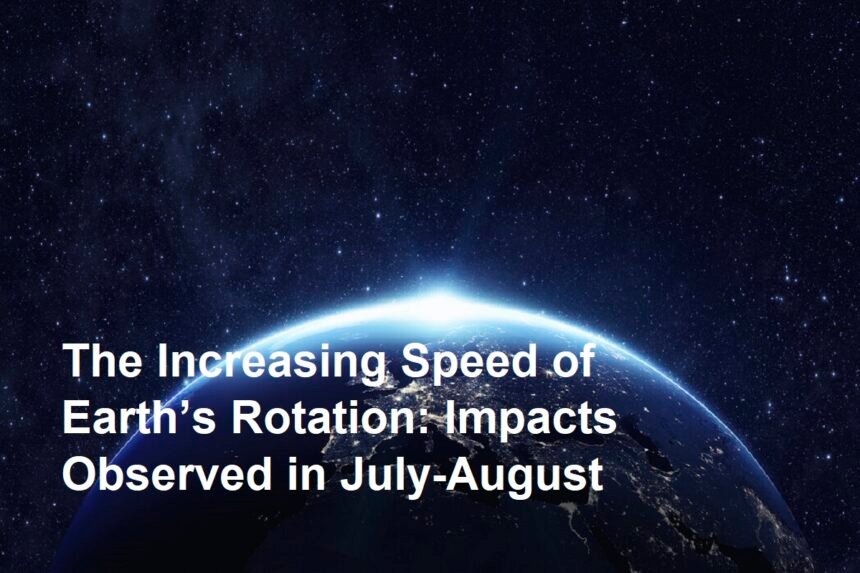It’s a fascinating concept to imagine our home planet spinning ever so slightly faster beneath our feet. Yet, in recent years, geophysicists have confirmed that the Earth’s rotation is not as constant as we once assumed. Particularly during July and August, subtle accelerations in the planet’s rotation have caught the attention of scientists, stirring curiosity and concern about how these changes might influence our daily lives, technology, and even the natural world.
What exactly does it mean when the Earth rotates faster? In simple terms, a full rotation that should take precisely 24 hours is shaving off a few milliseconds—sometimes even more, as recorded in recent years. While ordinary people cannot sense these micro-changes, sophisticated atomic clocks and satellite systems are acutely aware of them and must adapt accordingly.
During July and August, data from observatories and global timekeepers have shown an increase in these fleeting moments. This has been attributed to a combination of factors, including the redistribution of mass on Earth due to seasonal melting and reforming of ice, movement of air masses, large-scale ocean currents, and even geological activity deep under the crust. Somehow, summer seems to be the season when these effects combine to speed up our planet, if only by a whisker.
To the average person, losing a millisecond here or there sounds inconsequential. You can’t feel the day slip by just a fraction faster. However, in our hyper-connected, highly synchronized world, timing is everything. Global positioning systems, telecom networks, stock exchanges, and even the energy grid depend on split-second accuracy. If the Earth’s timekeeping drifts too far from Coordinated Universal Time (UTC), corrective measures like “leap seconds” might be required, or, in exceptional scenarios, even negative leap seconds—where one second is removed instead of added. This isn’t just a technicality; such changes bring risk and monumental headaches to IT professionals and engineers around the world.
Let’s not forget the environmental and cosmic dimensions. The Earth’s spin influences not just clocks, but also tides, weather patterns, migratory behaviors in animals, and geophysical processes such as earthquakes and volcanic eruptions. Even minor changes in rotation speed can subtly tweak tidal cycles, which in turn affect delicate coastal ecosystems. While the link between faster rotation and extreme weather isn’t direct, scientists continue to observe whether there are knock-on effects on things like jet streams and storm intensity, especially during seasons like July and August.
Interestingly, researchers are still unraveling the factors that drive the planet’s summer speed-up. Some point to changes in global wind patterns, while others study mass movements in the Earth’s core—a perplexing region shrouded in mystery. There’s even a poetic element to pondering our changing world: The idea that every year, for a short period, all of us are swept along by an imperceptibly faster ride on our planet’s surface.
What should we take away from this? For now, these rotational fluctuations, while small, are reminders of just how interconnected our technologies, environments, and cosmic circumstances really are. We may not sense these changes, but our satellites, computers, and scientific instruments surely do. As July and August roll around each year, scientists will keep a close eye on atomic clocks and the spinning Earth, eager to spot clues and adapt to whatever surprises our restless planet still has in store. It’s a testament to human ingenuity that we can measure such slight differences—and an invitation to keep looking up, questioning, and learning more about our ever-moving world.












